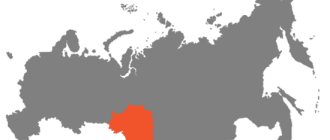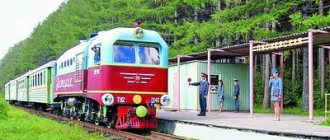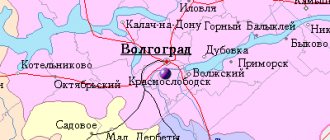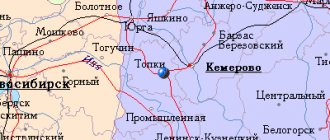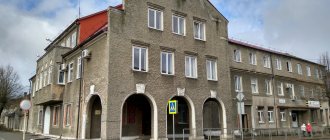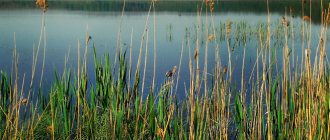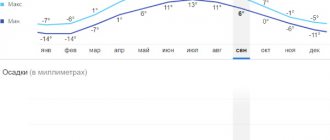This term has other meanings, see Sukhoi Log.
| City Sukhoi Log Flag | Coat of arms |
| A country | Russia, Russia |
| Subject of the federation | Sverdlovsk regionSverdlovsk region |
| Urban district | Sukhoi Log |
| Coordinates | 56°55′00″ n. w. 62°03′00″ E. d. / 56.91667° n. w. 62.05000° E. d. / 56.91667; 62.05000 (G) [www.openstreetmap.org/?mlat=56.91667&mlon=62.05000&zoom=12 (O)] (Z)Coordinates: 56°55′00″ N. w. 62°03′00″ E. d. / 56.91667° n. w. 62.05000° E. d. / 56.91667; 62.05000 (G) [www.openstreetmap.org/?mlat=56.91667&mlon=62.05000&zoom=12 (O)] (I) |
| Chapter | Sukhanov, Stanislav Konstantinovich |
| Based | in 1710 |
| City with | 1943 |
| Center height | 170 |
| Population | ↘33,944[1] people (2016) |
| Names of residents | sukholozhtsy, sukholozhets, sukholozhans |
| Timezone | UTC+5 |
| Telephone code | +7 34373 |
| Vehicle code | 66, 96, 196 |
| OKATO code | [classif.spb.ru/classificators/view/okt.php?st=A&kr=1&kod=65494 65 494] |
| Official site | [goslog.ru/ru] |
| Sukhoi Log Moscow |
Ekaterinburg Sukhoi Log |
Audio, photo and video
on Wikimedia Commons
K: Settlements founded in 1710
Sukhoi Log
- a city in Russia, the center of the Sukhoi Log urban district in the Sverdlovsk region. An urban settlement since 1932, a city since 1943.
Story
The emergence of the Sukholozhskaya settlement dates back to 1710. City Day is celebrated on the second Sunday of August.
Around the end of the 17th century, the formation of the villages dates back to: Povarnya (now part of the village of Novopyshminskoye), Zaimka, Spasskaya (now Melnichnaya), Filatovskoye, Kur'i, Borovki, Valovaya (part of the village of Kur'i), Kokuy (now the village of Znamenskoye), Shata, Ryaposova (now Svetloye village), Rudyanskoye.
Architectural monuments include: the Church of St. Nicholas the Wonderworker in the village of Novopyshminskoye, the Church of the Sign in the village of Znamensky, the Church of Michael the Archangel in the village of Novopyshminskoye.
The first industrial enterprise on the territory of Sukholozhye was a paper mill, founded in 1879.
In early November 1930, the first Sukhoi Log cement was produced.
In 1940, the 19th reserve regiment, stationed in Sukhoi Log, was reorganized into the 666th Infantry Regiment of the 153rd Infantry Division, which later became the 3rd Guards Rifle Division.
Since 1937, the birth of the production of asbestos-cement products has been noted. Since 1942, the production of secondary non-ferrous metals begins. from August 1941 to December 1944, the Odessa Higher Artillery Command School was located, among its Ural graduates of the school: the Soviet philosopher Ilyenkov, Evald Vasilyevich, the USSR Minister of Justice and candidate member of the CPSU Central Committee Kravtsov, Boris Vasilyevich, the Soviet and Russian surgeon Ratner, Georgy Lvovich
From December 1941 to April 1942 The 167th Infantry Division was formed. 109 of its fighters became Heroes of the Soviet Union.
In August 1942, out of 5,000 sailors of the Pacific Fleet and a significant number of local residents in the Sukholozhsky region, the 93rd Infantry Brigade was formed, which took part in the battles in Stalingrad in October.
Sukhoi Log acquired the status of a city in February 1943, the center of the municipal formation is the city of Sukhoi Log. On January 3, 1965, the city received the status of a city of regional subordination.
In August 1992, the 300th anniversary of the village of Filatovskoye was celebrated.
On December 17, 1995, a local referendum was held to determine the boundaries and structure of local government bodies of the municipal formation of the city of Sukhoi Log. A single municipal entity was formed as part of the city of Sukhoi Log, the villages of Altynai, Zolotoruda, Reft, Cheremshanka, Glyadeny-Sanatorium, Quarter 233, the villages of Znamenskoye, Kuri, Novopyshminskoye, Makhanovo, Rudyanskoye, Svetloye, Talitsa, Taushkanskoye, Filatovskoye, the villages of Brusyan, Glyadeny, Shata, Borovki, Kazanka, Sergulovka, Mokraya, Maly Taushkan, Zaimka, Melnichnaya.
Sukhoi Log was founded in 1680-1682 by people from the village of Shartash
(near Yekaterinburg), whose residents were considered working people of the Stroganovs. Several families left Shartash and settled near the Pyshma River, in an area called Sukhoi Log.
According to surveys of old-timers, it turned out that the founders of the village of Sukhoi Log were: 1. Bykov Yakov Vasilyevich (founder of the Yakunyat family) 2. Efremov Ignatiy Vladimirovich 3. Sukhonosov Daniil Dmitrievich.
These three families, having settled in dry logs, began to acquire a household. At first they lived in dugouts, which were located near the mountain where 6 Sovetskaya Street is now.
Their initial occupation was hunting and fishing. Gradually they began clearing land for arable land. When we finally took a closer look at the new places, we began to build houses.
Their construction was carried out jointly. The first house was built by the family of Y.V. Bykov, who was considered the eldest among the settlers. The estate where this house stood is now located on Shulin Street, 24.
In the early nineties of the 19th century it was rebuilt (rebuilt). During the reconstruction of the house by Vasily Andreevich Bykov, under the matka (main beam) a letter was found, issued by the Stroganov brothers in 1675 in the name of Vasily Bykov and his son Yakov, according to which they were freed from serfdom and were allowed to live in any area they wished. This certificate was handed over to the Shadrinsk Museum of Local Lore in 1924.
The Efremov house was built on the site where the estate of Fyodor Vasilyevich Brylin is currently located, along Lenin Street. The Sukhonosovs' house stood near the present estate of I.I. Perevalov, along Klyuchevskaya Street (towards Lenin Street). These three houses were built approximately in the 1700-1720s.
An indirect confirmation of the existence of Sukhoi Log from this period is the following fact described in the local newspaper. In 1954, Alexander Pavlovich Egorov, while cultivating his garden, which is located on the former estate of Mikhail Grigorievich Efremov, came across an old treasure that contained 61 kg of copper coins minted from 1540-1670 and 18 silver coins weighing 400 grams.
The Bykov family has preserved a legend about the death of the first resident of Sukhoi Log, Yakov Vasilievich Bykov. When he became very old, he ordered his relatives to take him to Shartash before his death and bury him there, and if this failed, then to bury him under a pine tree that grew on the right bank of the Pyshma and was visible from the window of his house. Soon he fell ill, they put him on a cart and took him to Shartash, but they took him only to a place called Petukhov Vzvoz (a mountain on Lenin Street, where store No. 15 is now located) and then on the cart, Y.V. Bykov. died. His corpse was brought back home and buried under the indicated pine tree. The first Sukholozhsky cemetery was founded around this pine tree. It was located on the right side of the now existing Voroshilov Street.
In 1847, coal mining began in the territory adjacent to Sukhoi Log. The development was carried out by some merchant. He supported many peasants brought from different parts of the country to work in the coal mines. This is where the population of Sukhoi Log increased, many so-called working people appeared.
The first mine was founded where Market Street is now. A little later, an adit was laid where Krasnoarmeyskaya Street is now, to the left of Lenin Street; in this place you can still see a semblance of a log. This is a collapsed adit. A collapse occurred in 1860, during which people, horses and equipment were buried. Along the line of this adit, two shafts (pipes) were made, which served as vents and at the same time for supplying rock. One was located opposite the kindergarten on Lenin Street, and the other in the place where store No. 34 is now. The adit went to the place where the estate of Stepan Alekseevich Pyankov is now located.
In addition, there were two mines on the Novaya Polyana site and on the left side of the Pyshma River; two mines on the road to Irbit Peaks (Altynai) and two mines behind the railway. The mined coal was transported on horseback to the city of Yekaterinburg and further to the Kama-Votkinsk plants. In 1868 (according to local historian E.E. Leontyev in 1861), the development of coal mines in Sukhoi Log was stopped. According to some data, for the Siberian Paper Mill, coal was mined at the Novaya Polyana site until 1878.
In the sixties of the last century, the production of lime was started by the wife of a coal mine tenant. The foreman at this production was Alexey Yakovlevich Olesov, who later became an independent tenant of lime kilns. In addition to him, at various periods the tenants were: Vasily Bykov (Pronichev), Petr Mikhailovich Bykov, Nikolay Efimovich Bersenev (Kozhanok) and Alexander Timofeevich Morev.
The first water mill in Sukhoi Log was built in 1725-1730 by the Bykov family (Yakunyat). The location was chosen poorly (opposite the current Zagotskot office). Every year, the hollow water broke the earthen rampart and sometimes demolished buildings. Therefore, in the eighties of the eighteenth century, the same Bykovs built another water mill on the Pyshma River where the Bykovsky village is now located. Hence its name, since the land plot belonged to the Bykov family.
This mill was demolished in 1860, and the land plot was sold to a coal mine tenant, who sold it to Ivan Yakovlevich Yates in the late seventies. The latter built a house and a summer cottage on this site, and in 1912 began building a factory for the production of wood cardboard. Construction was stopped in 1917.
Above Sukhoi Log on the Pyshma River in 1890, Nikolai Antonovich Berinov built a water mill, the building of which has survived to this day with a dilapidated dam. In 1913 it was sold to Suturikin. According to the stories of some people, the mill was lost at cards by Berinov's son. The area located between the village of Sukhoi Log and Deciduous Log, on the one hand, the Pyshma River and the Trans-Urals, on the other hand, in those days was covered with a dense pine forest, in which there were many squirrels and other animals. This forest was a quitrent item of state importance. In the early nineties (1907-1908), the forest was predatorily cut down.
In this forest, in the place where the pipe and slate shops are now located, there was a swamp in which there was an area of approximately 40-50 square meters. meters, where the water did not dry up in any dry summer. In this swamp there were a lot of small insects that in appearance resembled lice, and therefore this swamp was called “Lousy”.
According to the stories of the Efremovs Efim and Nikolai Spiridonovich, until the forties of the last century (the beginning of the development of coal), there were only three surnames in Sukhoi Log: the Bykovs, the Efremovs and the Sukhonosovs. Only the Bykovs lived on the left side of Pyshma, and the Efremovs and Sukhonosovs lived on the right.
The streets were called
by last names or nicknames of residents, where they lived. For example, Spirin Street - named Efremova, across the river, Filicheva Gora or Yakunyatskaya - nicknamed Bykov, and where the Sukhonosovs lived - the place was called “At the Key”.
Since the beginning of the development of coal mines, many new residents have come to Sukhoi Log, as a result of which there has been an increase in the number of estates (yards) and, accordingly, streets. For example, Tatarovka Street appeared near the existing cemetery, people who spoke broken Russian settled on it; the street near Klyuch received the name – The End.
By 1916, the following street names had developed: Chernolyagina - Lenina Spiryatskaya - Pionerskaya End - Svobody Kazanyatsky region - Voikova Road to the shops - Dzerzhinsky At the key - Klyuchevskaya At the key - Krasnoarmeyskaya Morevsky end - Paris commune Tatarovka - Voroshilova Filicheva Gora - Krasnaya Gorka Filicheva Gora - Soviet Road beyond Usolka – Proletarskaya Road to the Ananyevs – Shulina Beregovaya – Embankment
The names from those times remained: “Melnicheva Steppe” after one of the representatives of the Efremov family and “Yakunyatskaya Rareka”.
The first wooden chapel (Old Believer church) in Sukhoi Log was built in 1725 on the very spot where the House of Culture is now located. Later, a small brick church was built on the same place, and the chapel was transported and placed on the so-called Rostan roads of Shata - Kurya and Sukhoi Log - Kashino (the place where the city hospital is now located). In 1929, the chapel was dismantled, and the logs from it were used as firewood for lime burning.
Construction of the new church began in 1847 and was completed in 1854. It was carried out by the strength of local residents, only artisans were hired at the expense of funds collected by the trusteeship (these were people who walked around with a mug on their chest and collected money for the construction of the temple). Before the completion of the construction of the church, an accident occurred: Vasily Efimovich Beresnev, who worked there, fell from the scaffolding around the so-called large dome, and as a result of the fall and bruise, his arms and legs were paralyzed. The rural community paid this Bersenev an allowance of five rubles a year until his death.
In 1929, by decision of a meeting of citizens of Sukhoi Log, the church was closed and ceased to exist as such. Its building was used for various purposes, and currently it houses the House of Culture.
Construction of the first school in Sukhoi Log began in 1853 and was completed in 1858. It was a parochial three-class one-room school with 30 places. In the first years, the number of students did not exceed thirty people. The first teacher was Lyapustina Elizaveta Andreevna, who taught there for about 30 years.
In 1879, the Kamyshlovsky district zemstvo in Sukhoi Log built a new school building and opened a zemstvo three-class elementary school. On January 1, 1889, Alexandra Evgenievna Lyapustina, who graduated from the Kamyshlovsky gymnasium in 1883 and had previously worked as a teacher’s assistant at the Kashin elementary school, was appointed teacher at this school. According to Lyapustina, in 1889 there were only 34 students at the school, and in 1890 the number increased to 50. For 15 years Lyapustina worked alone, and only in 1904 there were two teachers at the school. The second teacher was Yulia Mikhailovna Troitskikh. In 1903, a school library was opened. In 1897 Lyapustina A.E. carried out the main work in Sukhoi Log on the first All-Russian population census carried out at that time. In 1903, for good work, the Kamyshlovsky district zemstvo government, by its decision, awarded Lyapustina A.E. building her a house, in which she lived until her death in 1950. Lyapustina taught children at the Sukholozhskaya school until 1924, i.e. before retirement.
Before the revolution, there was a state wine shop (tavern) and two groceries (shops) in Sukhoi Log. The first belonged to the richest resident of the village, Dmitry Nikolaevich Afonasyev, who, in addition to it, also had a tannery for tanning raw leather. The second shop belonged to the Kamyshlovsky merchant Meshcheryakov, in which his clerk, Vasily Efimovich Boyarinov, traded.
Consumer society
was organized in 1914, it initially consisted of 116 members - shareholders, in 1915 their number grew to 350 people. The composition of the first board of the company was as follows: Bykov Fedor Petrovich (chairman), Bykov Osip Petrovich, Bykov Semyon Ivanovich, Rubtsov Petr Fedorovich and Bykov Ivan Petrovich. At the beginning, the consumer society rented premises for a store from one of the villagers, and by 1915 they built their own store (currently store No. 15 is located in this building).
In June 1921, the Sukholozhsk Credit Partnership was organized with the number of shareholders - 18 people; Bykov Ivan Yakovlevich was elected chairman. In 1923, on the basis of the Sukholozhsky, Rudyansky and Novopyshminsky credit partnerships, the Kuryinsky branch of the State Bank was organized.
Before the revolution, the village of Sukhoi Log was part of
part of the Znamenskaya volost of the Kamyshlovsky district of the Perm province. After the liberation of the Urals from the White Guards, Sukhoi Log was separated from the Znamenskaya volost and in August 1919 the first constituent volost congress of Soviets was held, but in which the first Executive Committee of the volost Council was elected. Bersenev Pavel Ivanovich was elected the first chairman of the volost executive committee. The first chairman of the Sukholozhsky Village Council after the expulsion of the Kolchakites was Pavel Artemyevich Bykov.
Source: Efremov Andrey Dmitrievich, Hoary legends, “Sukhoi Log and Sukholozhsky district”, part III, 1966.
Attractions
- Kurinsky iron-mineral waters, Professor's Rock, Sukholozhskaya cave, Lake Irbitskoye, Sosnovy Bor, Linden Alley, Galyanovskoye swamp, Gladkoye swamp, Kamensko-Altynaiskoye swamp;
- The “Devil’s Chair” and “Three Sisters” rocks hanging over the Pyshma River
- There is a country road towards Znamensky near the village of Shata, along the left bank of the river of the same name. Of interest here are a small waterfall, the Gendarme rock - a reef formation that arose during the Paleozoic period, when the sea splashed at this place, and then - the remains of a lava flow of prehistoric volcanoes/[17]
- behind the village of Znamensky, one and a half kilometers along a country road along the river, on the opposite bank of Pyshma lies the huge rock “Divya Gora”, a natural monument of regional significance. 300 million years ago the stone was an active volcano. At the base of the rock there are tuffs and jaspers, colored purple and red from interaction with sea water. Nowadays, on the right bank, opposite the rock, every year on the first Sunday in August, a popular student song rally “Znamenka” is held.[17]
Links
- City Administration website
- History of the coat of arms of Sukhoi Log
| Cities of the Sverdlovsk region | |
| Administrative center: Ekaterinburg Alapaevsk | Aramil | Artyomovsky | Asbestos | Berezovsky | Bogdanovich | Verkhniy Tagil | Verkhnyaya Pyshma | Verkhnyaya Salda | Verkhnyaya Tura | Verkhoturye | Volchansk | Degtyarsk | Zarechny | Ivdel | Irbit | Kamensk-Uralsky | Kamyshlov | Karpinsk | Kachkanar | Kirovgrad | Krasnoturinsk | Krasnouralsk | Krasnoufimsk | Kushwa | Lesnoy | Mikhailovsk | Nevyansk | Nizhniye Sergi | Nizhny Tagil | Nizhnyaya Salda | Nizhnyaya Tura | New Lyalya | Novouralsk | Pervouralsk | Polevskoy | Revda | Dir | Severouralsk | Serov | Sredneuralsk | Sukhoi Log | Sysert | Tavda | Talitsa | Turinsk |
Notes
- ↑ 12
www.gks.ru/free_doc/doc_2016/bul_dr/mun_obr2016.rar Population of the Russian Federation by municipalities as of January 1, 2016 - [demoscope.ru/weekly/ssp/rus59_reg2.php All-Union Population Census of 1959. The size of the urban population of the RSFSR, its territorial units, urban settlements and urban areas by gender] (Russian). Demoscope Weekly. Retrieved September 25, 2013. [www.webcitation.org/6GDOghWC9 Archived from the original on April 28, 2013].
- ↑ 1234567891011
www.MojGorod.ru/sverdlov_obl/suhojlog/index.html People's encyclopedia “My City”. Sukhoi Log (city) - [demoscope.ru/weekly/ssp/rus70_reg2.php All-Union Population Census of 1970 The size of the urban population of the RSFSR, its territorial units, urban settlements and urban areas by gender.] (Russian). Demoscope Weekly. Retrieved September 25, 2013. [www.webcitation.org/6GDOiMstp Archived from the original on April 28, 2013].
- [demoscope.ru/weekly/ssp/rus79_reg2.php All-Union Population Census of 1979 The size of the urban population of the RSFSR, its territorial units, urban settlements and urban areas by gender.] (Russian). Demoscope Weekly. Retrieved September 25, 2013. [www.webcitation.org/6GDOjhZ5L Archived from the original on April 28, 2013].
- [demoscope.ru/weekly/ssp/rus89_reg2.php All-Union Population Census of 1989. Urban population]. [www.webcitation.org/617x0o0Pa Archived from the original on August 22, 2011].
- [www.perepis2002.ru/ct/doc/1_TOM_01_04.xls All-Russian Population Census 2002. Volume. 1, table 4. Population of Russia, federal districts, constituent entities of the Russian Federation, districts, urban settlements, rural settlements - regional centers and rural settlements with a population of 3 thousand or more]. [www.webcitation.org/65AdCU0q3 Archived from the original on February 3, 2012].
- [www.gks.ru/bgd/regl/b08_14t/IssWWW.exe/Stg/ur/03-00.htm Administrative-territorial division of the Sverdlovsk region as of January 1, 2008]. Retrieved May 11, 2016. [www.webcitation.org/6hQQf5WLh Archived from the original on May 11, 2016].
- [www.gks.ru/bgd/regl/B09_109/IssWWW.exe/Stg/d01/tabl-21-09.xls Number of permanent population of the Russian Federation by cities, urban-type settlements and districts as of January 1, 2009]. Retrieved January 2, 2014. [www.webcitation.org/6MJmu0z1u Archived from the original on January 2, 2014].
- [sverdl.gks.ru/wps/wcm/connect/rosstat_ts/sverdl/resources/c081bf004cb2e2e8b07efb98f842dd0b/number and distribution of the population of the Sverdlovsk region.rar All-Russian population census 2010. Number and distribution of the population of the Sverdlovsk region]. Retrieved June 1, 2014. [www.webcitation.org/6Q0e0rzaI Archived from the original on June 1, 2014].
- [www.gks.ru/free_doc/doc_2012/bul_dr/mun_obr2012.rar Population of the Russian Federation by municipalities. Table 35. Estimated resident population as of January 1, 2012]. Retrieved May 31, 2014. [www.webcitation.org/6PyOWbdMc Archived from the original on May 31, 2014].
- [www.gks.ru/free_doc/doc_2013/bul_dr/mun_obr2013.rar Population of the Russian Federation by municipalities as of January 1, 2013. - M.: Federal State Statistics Service Rosstat, 2013. - 528 p. (Table 33. Population of urban districts, municipal districts, urban and rural settlements, urban settlements, rural settlements)]. Retrieved November 16, 2013. [www.webcitation.org/6LAdCWSxH Archived from the original on November 16, 2013].
- [www.gks.ru/free_doc/doc_2014/bul_dr/mun_obr2014.rar Table 33. Population of the Russian Federation by municipalities as of January 1, 2014]. Retrieved August 2, 2014. [www.webcitation.org/6RWqP50QK Archived from the original on August 2, 2014].
- [www.gks.ru/free_doc/doc_2015/bul_dr/mun_obr2015.rar Population of the Russian Federation by municipalities as of January 1, 2015]. Retrieved August 6, 2015. [www.webcitation.org/6aaNzOlFO Archived from the original on August 6, 2015].
- taking into account the cities of Crimea
- [www.gks.ru/free_doc/doc_2016/bul_dr/mun_obr2016.rar Population of the Russian Federation by municipalities as of January 1, 2016. Table “31. Population of cities and towns by federal districts and constituent entities of the Russian Federation as of January 1, 2016.” RAR archive (1.0 MB)]
- ↑ 12
“5 famous resorts of the Middle Urals and their surroundings” Publishing house “Malysh and Carlson”, Rezh, 2008
Coat of arms and flag of the Sukhoi Log municipal district
According to Article 4 of the Charter of the Moscow Region, the city of Sukhoi Log was approved on July 26, 2001 by the Sukhoi Log City Duma:
Coat of arms of the municipality (brief heraldry and historical description)
In an azure field there are three silver peaked mountains, burdened with a scarlet bull with golden horns, eyes, tongue, hooves and a ring in the nose, stepping from one land hill to another through a ravine of the same color.
Flag of the municipality (not provided for by the Charter of the Moscow Region)
A cloth made up of three horizontal stripes - blue, white and green. The width of the blue stripe is 1/3 of the width of the panel, white - 5/6, and green - 1/6. In the middle third, the blue stripe has a cutout at the bottom in the form of three pointed mountains. The green stripe also has a semi-circular cutout at the top in the middle third. In the middle of the main (white) stripe there is an image of a bull figure from the city coat of arms, made in red and golden-yellow colors. The aspect ratio of the panel is 3:5. The reverse side of the panel mirrors the front.
An excerpt characterizing Sukhoi Log (city)
“It’s impossible to tell her now,” Princess Marya said. - But what should I do? “Entrust this to me,” said Princess Marya. “I know...” Pierre looked into Princess Marya’s eyes. “Well, well...” he said. “I know that she loves... will love you,” Princess Marya corrected herself. Before she had time to say these words, Pierre jumped up and, with a frightened face, grabbed Princess Marya by the hand. - Why do you think so? Do you think I can hope? You think?! “Yes, I think so,” said Princess Marya, smiling. - Write to your parents. And instruct me. I'll tell her when it's possible. I wish this. And my heart feels that this will happen. - No, this cannot be! How happy I am! But this cannot be... How happy I am! No, it can not be! - Pierre said, kissing the hands of Princess Marya. – You go to St. Petersburg; it is better. “And I’ll write to you,” she said. - To St. Petersburg? Drive? Okay, yes, let's go. But can I come to you tomorrow? The next day Pierre came to say goodbye. Natasha was less animated than in previous days; but on this day, sometimes looking into her eyes, Pierre felt that he was disappearing, that neither he nor she was any more, but there was only a feeling of happiness. “Really? No, it can’t be,” he said to himself with every look, gesture, and word that filled his soul with joy. When, saying goodbye to her, he took her thin, thin hand, he involuntarily held it in his a little longer. “Is this hand, this face, these eyes, all this alien treasure of feminine charm, will it all be forever mine, familiar, the same as I am for myself? No, this is impossible!..” “Goodbye, Count,” she told him loudly. “I’ll be waiting for you,” she added in a whisper. And these simple words, the look and facial expression that accompanied them, for two months formed the subject of Pierre’s inexhaustible memories, explanations and happy dreams. “I will be waiting for you very much... Yes, yes, as she said? Yes, I will be waiting for you very much. Oh, how happy I am! What is this, how happy I am!” - Pierre said to himself. Nothing now happened in Pierre's soul similar to what happened in it in similar circumstances during his matchmaking with Helen. He did not repeat, as then, with painful shame the words he had spoken, he did not say to himself: “Oh, why didn’t I say this, and why, why did I say “je vous aime” then?” [I love you] Now, on the contrary, he repeated every word of hers, his own, in his imagination with all the details of her face, smile, and did not want to subtract or add anything: he only wanted to repeat. There was no longer even a shadow of doubt as to whether what he had undertaken was good or bad. Only one terrible doubt sometimes crossed his mind. Isn't this all in a dream? Was Princess Marya mistaken? Am I too proud and arrogant? I believe; and suddenly, as should happen, Princess Marya will tell her, and she will smile and answer: “How strange! He was probably mistaken. Doesn’t he know that he is a man, just a man, and I?.. I am completely different, higher.” Only this doubt often occurred to Pierre. He also didn’t make any plans now. The impending happiness seemed so incredible to him that as soon as it happened, nothing could happen. It was all over. A joyful, unexpected madness, of which Pierre considered himself incapable, took possession of him. The whole meaning of life, not for him alone, but for the whole world, seemed to him to lie only in his love and in the possibility of her love for him. Sometimes all the people seemed to him to be occupied with only one thing - his future happiness. It sometimes seemed to him that they were all as happy as he was, and were only trying to hide this joy, pretending to be busy with other interests. In every word and movement he saw hints of his happiness. He often surprised people who met him with his significant, happy looks and smiles that expressed secret agreement. But when he realized that people might not know about his happiness, he felt sorry for them with all his heart and felt a desire to somehow explain to them that everything they were doing was complete nonsense and trifles, not worth attention. When he was offered to serve or when they discussed some general, state affairs and war, assuming that the happiness of all people depended on this or that outcome of such and such an event, he listened with a meek, sympathetic smile and surprised the people who spoke to him with his strange remarks. But both those people who seemed to Pierre to understand the real meaning of life, that is, his feeling, and those unfortunate ones who obviously did not understand this - all people during this period of time seemed to him in such a bright light of the feeling shining in him that without the slightest effort, he immediately, meeting any person, saw in him everything that was good and worthy of love. Looking at the affairs and papers of his late wife, he did not feel any feeling for her memory, except pity that she did not know the happiness that he knew now. Prince Vasily, now especially proud of receiving a new place and star, seemed to him a touching, kind and pitiful old man. Pierre often later recalled this time of happy madness. All the judgments that he made about people and circumstances during this period of time remained true for him forever. He not only did not subsequently renounce these views on people and things, but, on the contrary, in internal doubts and contradictions he resorted to the view that he had at this time of madness, and this view always turned out to be correct. “Perhaps,” he thought, “I seemed strange and funny then; but I was not as mad then as it seemed. On the contrary, I was then smarter and more insightful than ever, and I understood everything that is worth understanding in life, because ... I was happy.” Pierre's madness consisted in the fact that he did not wait, as before, for personal reasons, which he called the merits of people, in order to love them, but love filled his heart, and he, loving people for no reason, found undoubted reasons for which it was worth loving their. From that first evening, when Natasha, after Pierre's departure, told Princess Marya with a joyfully mocking smile that he was definitely, well, definitely from the bathhouse, and in a frock coat, and with a haircut, from that moment something hidden and unknown to her, but irresistible, awoke in Natasha's soul. Everything: her face, her gait, her gaze, her voice - everything suddenly changed in her. Unexpected for her, the power of life and hopes for happiness surfaced and demanded satisfaction. From the first evening, Natasha seemed to have forgotten everything that had happened to her. Since then, she never once complained about her situation, didn’t say a single word about the past and was no longer afraid to make cheerful plans for the future. She spoke little about Pierre, but when Princess Marya mentioned him, a long-extinguished sparkle lit up in her eyes and her lips wrinkled with a strange smile.
